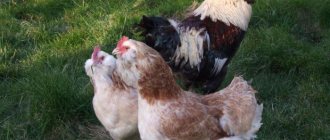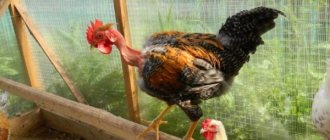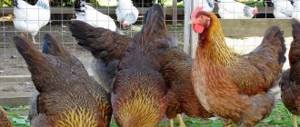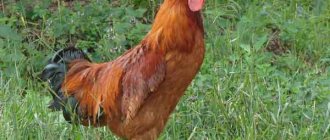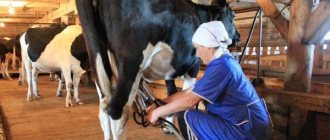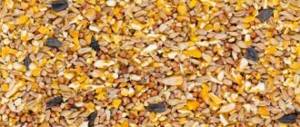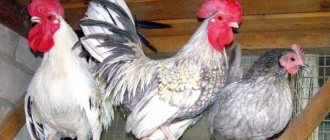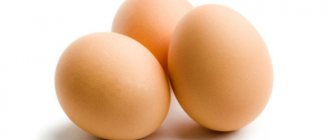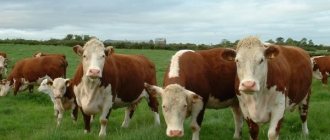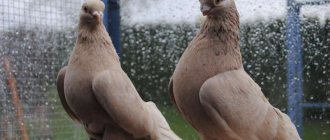Gypsy horses are a rare, expensive breed, the demand for which is constantly increasing. What attracts people about horses is their decorative appearance, physical strength, endurance, flexible character, and low maintenance requirements.
Story
Horses constantly accompanied the nomadic gypsy peoples and became the only means of transportation. Animals were valued for their ability to work in harness. For breeding, physically strong, resilient individuals were selected, capable of transporting carts with heavy luggage over long distances. These qualities became the breed characteristics of gypsy horses.
The tribes came to the territory of Europe from the Byzantine Empire, now these are the countries of the Balkan Peninsula and Turkey. The exact dates of these events are unknown, since the nomads did not keep a documentary record of their history and horse breeding books.
At the beginning of the 15th century, gypsy peoples came to the territory of what is now Britain, so a trace of English breeds remained in the genes of horses:
- Highland;
- Felp;
- shire;
- kleyedesdal.
The breed was finally formed on the island of Ireland. For a long time it was called kob, translated from English as a strong, short horse. Later, in the Netherlands and Germany, the name Tinker, a disparaging nickname for a gypsy, took root.
Hippologists learned about gypsy horses in the mid-20th century, when the demand for rare, unusual horses increased in the United States. However, it was recognized and registered only in 1996, the official name of the breed is Gypsy draft horses.
Historical data
Today we know about one breed formed by nomads. This is a tinker, or gypsy draft horse. The word "tinker" means "tinker" - a profession common among Gypsies in Northern Europe and Great Britain . In Ireland itself, horses are called cobs. Among the representatives of the breed, piebald color predominates.
The variety was formed in Ireland at the turn of the 15th and 16th centuries. This is an explosive mixture of giant heavy draft horses (Shires, Clydesdays), local Irish trotters and Welsh ponies. Gypsies selected animals for working qualities and beauty, giving preference to piebald individuals with a long and thick mane.
Despite all their love for their pets, the nomads could not provide their horses with decent maintenance. The lot of the gypsy horse is meager pasture, life in the open air and the absence of any veterinary care. But it was precisely such harsh conditions that formed the strong immunity and endurance of the Tinkers.
Gypsies do not keep stud books, preferring to select animals based on many years of experience and intuition. There is no exact information about the pedigree of gypsy horses.
Tinkers were officially recognized as a breed only in 1996. Since that time, strict records of breeding individuals have been maintained, and the Irish Cob Association was founded. Kushti Byuk is recorded as the ancestor of this draft horse.
Breed characteristics
The appearance and working qualities of the animals were influenced by the nomadic lifestyle. With constant moving, a meager diet, and without veterinary care, only strong individuals with strong immunity survived.
Exterior
The sizes of gypsy horses vary greatly: weight ranges from 250 to 700 kg, height at withers from 140 to 160 cm. In the USA, animals were divided into 3 groups, depending on height:
- mini – up to 142 cm;
- classic – 142 – 155 cm;
- grand – from 155 cm.
Gypsy horses share common characteristics, regardless of size:
- a rough head with a hook-nosed profile and a beard under the lower jaw;
- long ears;
- massive neck;
- low withers;
- shoulders developed, massive;
- the back is shortened and straight;
- the legs are strong, the X-shaped posture is not considered a disadvantage;
- the hooves are strong;
- high croup;
- the mane and tail are thick and long;
- there are tassel friezes on the legs that insulate the limbs in the cold season;
- The skin is spotted: gray under the dark coat, pink under the light areas.
The piebald color predominates in the gypsy horse breed - white spots on a dark background. 3 types of color have formed:
- Overa - light asymmetrical markings on the lower part of the body, the tail is one color, at least one leg is black.
- Tobiano - head, one or both sides dark, limbs white, light markings on the chest, two-color tail, sometimes an asterisk on the forehead.
- Tovero - combines the two previous types.
In addition to piebalds, the breed also includes roan, forelock, and black individuals. The colors of the gypsy horses can be seen in more detail in the video.
Advantages and disadvantages
Gypsy draft horses have the following advantages:
- External beauty, decorative exterior.
- Universal working qualities: horses are used both under saddle and in harness.
- Soft movements.
- Balanced disposition.
- Unpretentiousness to living conditions.
- Undemanding to food.
The disadvantage of the breed is the high price of breeding horses. The demand for them is constantly growing; there are few purebred horses. In high-speed equestrian competitions, animals lose to other breeds.
Gypsy horse character
Gypsy horses are calm, phlegmatic horses; breeders recommend periodically encouraging and stirring the animal. Mares are often brought in to feed foals of other breeds with violent temperaments.
The horses move with a soft gait and become excellent companions on leisurely horse rides and when training novice riders. The photo shows horseback riding on gypsy horses.
Animals can withstand long rides with heavy loads and intense training. They learn quickly, are not stubborn or capricious. Equally suitable for moving in harness and under saddle.
Trade and exchange
The statement that the main economic activity of the Roma was the trade and exchange of these animals is correct.
This is evidenced by the appearance of the men of this people, whose indispensable attributes were a whip and boots.
A whip for a gypsy is like a dagger for a horseman. This is not only a symbol of social status, but also a very practical thing. In addition to working with horses, it could also be used as a weapon, and not only as a whip. The handle of the gypsy whip has a thickening at the end, into which lead was often poured. Such a club was a powerful argument in hand-to-hand combat. A real gypsy had to make his first whip himself. Often this indispensable attribute of real Roma (the self-name of this people) was passed down by inheritance or presented as a very valuable gift.
More on the topic: Business plan for breeding horses for meat
Trading superstitions are also associated with the whip. It was believed that a good dealer passes his luck to his whip, and he, in turn, can pass it on to another. Therefore, when bargaining and exchanging, they often tried to bargain not only the horse, but also the whip, and if this was possible, the deal was considered doubly successful.
The second attribute of real Roma - boots, is also associated with gypsy horses. They protected the legs at least a little from the heavy hooves of these large animals, and they looked very presentable.
In Russian folklore, buying a horse from a gypsy was often considered on a par with deception—swindling. This is not entirely true. If you delve deeper into history, it was the Gypsy horses that were very much valued by the nobles, and the Russian army often purchased Gypsy horses for their needs. So why the scam?
The point is that when bargaining with these people, it was possible to buy both an excellent horse and a dead nag disguised as one. And there was no special aim at deception in this. Usual practical calculation. If a person did not understand horses, it was not considered shameful to slip him stale goods.
True connoisseurs were not even offered such “suffocating” things. So it turns out that the “gypsy horse” in some sources is a sign of quality, and in others it is a synonym for dishonest bargaining.
However, there were other sources of income associated with horses. In winter, gypsies often stopped in villages, paying for bread and shelter with horse cakes (as fuel for stoves) and plowing arable land.
Features of care and maintenance
Gypsy horses are kept in a clean, dry room with good ventilation and humidity of at least 80%. No additional heating is required. The stall and stall are regularly cleaned: the horse is taken out, the garbage is swept up, the corners are cleaned, the drinking bowl, feeder, and floor are washed. The bedding is made from hay and is changed every day.
To maintain a neat appearance and normal well-being, the horse will need the following procedures:
- The thick mane, tail, and friezes are combed, tangled hair is sorted out, and stuck debris is cleared out. Before walks, the mane is braided, and in the evening it is undone.
- The wool is cleaned first with a hard brush, then with a soft brush. They start from the head, then move to the back, then one and the other side in turn.
- Wash the tail and mane twice a week with cool water with zoo shampoo and conditioner to make combing easier. In the summer they take them to swim in open water.
- After each walk, the nostrils are wiped with a damp cloth, then the hooves are cleaned with a hook, washed and dried.
- To maintain health, horses require constant physical activity: training, long walks.
In summer, the basis of the horses' diet is pasture grass, in winter - hay. Additionally, they are fed with vegetables, grain, and mixed feed. The diet includes the following products:
- oats;
- corn;
- barley;
- carrot;
- beets;
- potato.
The food is enriched with vitamins B, D, C, and calcium. During walks and training, animals sweat and lose fluid, so salt is added to their food, about 30 g per day. The owner makes up the feeding regimen himself, depending on the horse’s physical activity.
Horse stealing
Let's start with the fact that not all representatives of this nomadic people stole horses. However, such cases cannot be called rare. This was explained by the following reasons.
Wedding
A gypsy had no right to marry until he had his own horse. Usually it was worked off from childhood, or received as a gift from older relatives. However, if the guy was poor, or even an orphan, his only chance for family happiness was to steal someone else’s horse. As a rule, it was a horse from the manor's yard, which was located far from the camp. Lazy people also stole peasant horses, but this was much more dangerous, since it was the custom to beat a horse thief to death, despite his age.
Igor Nikolaev
auto RU
Bravado and ostentation
Gypsies are a hot-blooded people, and in order to prove their “maturity” and wealth, young people often stole a horse. After such an act, especially if the horse was noble, no one dared to doubt anymore that in front of him was a real desperate Roma. Gradually, this behavior began to be condemned by the elders in the camp, since it posed a direct threat to the quiet existence of the family.
More on the topic: Can horses swim?
Love for horses
Yes, yes, it was precisely the love for a particular horse that could push a gypsy to steal it. If the owner refused to sell his beloved animal, or the rum did not have the required amount, and there were no other ways left, the horse was taken away. And if it was a pacer, they tried to get him by any means necessary. Gypsy folklore describes many similar cases, and not always with a happy ending.
Prospects for breeding a gypsy horse
Gypsy draft horses are bred for sale to equestrian tourism centers and private owners. There are few animals in Russia, the demand is constantly growing, so breeding is becoming a profitable business. Private nurseries operate in Veliky Novgorod and Rybinsk.
Animals look spectacular when harnessed to a carriage; horses are invited to festive and special events. When running, they do not shake the rider, they move softly, like pacers, which is why animals are willingly taken to equestrian training centers.
Gypsy horses are not suitable for agricultural work, keeping in collective pens, or on pastures. A lush mane and friezes become dirty, tangled, and the hair takes a long time to wash and comb. Horses are not accepted for equestrian sports, with the exception of dressage.
Horse breeding: Giants of the equestrian world: Irish Cob. Gypsy legend from the shores of Albion
Gypsy ballad
“Don’t buy a horse from a gypsy, don’t take a daughter from a priest,” - this is what any Russian peasant from the times of Mikhail Yuryevich Lermontov or Lev Nikolaevich Tolstoy could say. And, of course, there were reasons for this. In Russia, and in all other countries where the nomadic people were scattered, the gypsies were never overly scrupulous about other people’s property: they were guilty of deceit, and in general they did not arouse much sympathy among the settled inhabitants. The Russian language even included such an unusual verb as “gypsy”, including “gypsy with horses” - that is, to sell and resell horses with a dubious history and not the most remarkable qualities. Since contemporaries write about this, and the expression itself has been preserved in people’s memory, it means that this really happened. But with all this, the gypsies were and still remain first-class horsemen who know a lot about good horses and know how to handle them. In equestrian circles you can often hear stories about the amazing abilities of some gypsy, who either cools down an unfamiliar stallion with one word, or calms a frightened mare with a single touch. Some of this “folklore,” of course, is inspired by the romantic image of the “last nomads of Europe,” created in our minds by A.S. Pushkin, but some has a real basis. Be that as it may, the gypsies left us an absolutely amazing breed, the potential of which is just beginning to unfold, and this alone makes us respect the freedom-loving Roma people.
The history of the Irish cobs, or gypsy draft horses, probably began many thousands of kilometers from Ireland. Today there is little doubt that the roots of the gypsies are in India. When, how and why part of the population of this ancient country uprooted and moved west remains unclear. But already in the 12th-13th centuries, the gypsies firmly settled in Byzantium, after which they first learned about the “vagrants from the east” in Europe. Over the next centuries, the gypsies settled throughout the continent and at the beginning of the 15th century they reached the British Isles. However, here they encountered another tramps, who were called “tinkers” here, i.e. “soldering workers”, “tinkers”. If everything is clear with the name of these English travelers - they, like the gypsies, were mainly engaged in metal processing, then their origin is shrouded in darkness. Were these the original inhabitants of Britain or just the first wave of gypsies unknown to us? Now this is no longer so important, because the Roma people have completely occupied the niche of Tinkers, taking away even the name from them.
The gypsies, of course, came to the islands along with their horses, without which it is impossible to imagine a nomadic lifestyle. Here they began to crossbreed with local breeds, which eventually led to the appearance of Gypsy Kobs. It so happened that it was in Ireland that wandering musicians, magicians, acrobats and tinkers were able to create one of the best draft horses in the world. Although it was not easy...
Toughie
As breeders, the gypsies of that time were limited in everything. Their poor lifestyle did not allow them to maintain expensive breeding horses; constant migrations and scattered connections between camps did not at all contribute to the systematic selection of sires. What could happen in such a situation? Just a good workhorse... That's what it turned out to be! Not just good quality, but excellent.
The gypsies needed reliable, unpretentious and hardy horses, which, in the absence of systemic artificial selection, actually took place in the camps under much stricter natural selection. Traditional gypsy crafts never offered much of a chance to get rich, so the basis of the breed was piebald animals - the cheapest in Europe at that time. Breeders were happy to sell such “substandard” horses for pennies, without even bothering to find out their real qualities. And these horses were not mobilized into the army: what English officer would want to sit on a horse “under a cow”? However, the gypsies never shared this attitude towards piebald horses and always considered them very elegant.
Almost all the breeds bred at that time in the British Isles left their mark on the Irish Cobs: Welsh Cobs, Dales, Fell, Highland, Clydesdales and Shires. In general, a cob is always a short, stocky draft or riding horse (cob - “large nut, stalk,” in general, something strong) - just what the gypsies needed. During long journeys from place to place, only such horses could pull a wagon non-stop, and quickly recover on pasture during the night. Tinkers did not know what a stable was, good oats, and often even horseshoes. There is no need to talk about veterinarians. It was easier to sell a sick horse to some simpleton than to treat it using the available funds, which were barely enough for one’s own food. This spartan lifestyle and heavy loads turned the gypsy kobs into amazing animals. They are very calm, hardy, and require only basic care. And at the same time incredibly beautiful.
Pinto gold
Irish gypsies love their horses very much and often call them their treasure. However, Europeans were always more interested in papers, and therefore the status of a separate breed was not recognized for a long time. The tramps really did not keep any pedigree books, did not issue documents, and in general, according to experts, treated the selection process extremely irresponsibly. So until the Americans on the other side of the ocean took and even assigned the status of a separate breed to Indian brown horses, the appearance of a “Gypsy draft breed” in European reference books seemed simply unthinkable. Today this is a fait accompli, which if anyone raises objections, it is only before their first acquaintance with these beautiful creatures.
The history of the development of the breed was very complex, so the kobs vary greatly in their measurements. The height of Gypsy Kobs can vary from 135 to 160 cm, and weight - from 240 to 700 kg. But usually these are horses of medium height with a slightly rough, but still noble head, with well-set long ears, a goatee and often a slightly hooked nose. The mane is very lush. Tinkers' necks are strong and sometimes very beautifully curved. The shoulders are steep and strong, the withers, like those of other draft horses, are low. The rather short and straight back smoothly transitions into a high, strong and well-muscled croup. The legs are very strong and strong. Often there is a peculiar “cow position” - a distinctive feature of many draft breeds. The hooves are large and very strong, because Tinkers rarely wore shoes. The legs are decorated with long and very impressive friezes that protect the hooves in bad weather.
A characteristic feature of gypsy draft horses is their piebald color, of which there are three variants: with a predominance of the tobiano gene, with a predominance of the overo gene, and a mixed type (tovero). In any case, the white spots are located, as it were, on top of the main color, which can be any, and under the main color the skin is usually gray, and under white hair it is pink. If the white spot extends into the eye area, then they may be blue. At maximum manifestation of piebaldness, the spots occupy the entire surface of the body. In addition, among the Irish Cobs there are dappled, roan and solid horses (usually black with white markings on the head and legs).
All gaits of Tinkers are confident, free and sweeping. It is very comfortable to sit on such a horse, which is why tinkers have recently become popular in groups for beginner riders. The only drawback of our heroes is rapid fatigue at a gallop, which is characteristic of all draft breeds. But this can be corrected to a certain extent with endurance training. But the Tinker's trot is beautiful, soft, with great grip.
What's in a name?
Modern horsemen are often confused about the names that were and are used to designate Gypsy Kobs. The main name of the breed is “gypsy draft horse”. This is how its official founder, the stallion Cushti Bok, was registered in 1996. However, one must understand that “gypsy draft horses” are not all gypsy horses, but only the best of them, specially selected for further breeding. “Irish Cob” is the second name for the same breed, which has become widespread in the British Isles (it is also called “local piebald” here). When in the mid-1990s. Gypsy horses first appeared in Germany and Holland; horse owners began to call them “tinkers”. Since, by origin, “tinker” is just a disparaging designation for gypsies, this name has not gained much popularity outside of these two countries.
Today, there are several stud books for Gypsy draft horses, including three in the USA, where they have gained incredible popularity due to their typically “American” coloring and good disposition. In 1996, the Irish Cob Society (ICS) was founded to register Gypsy horses. At the beginning of the 21st century, against the backdrop of growing interest in the Irish on the part of clubs and horse owners, its main function became not so much selection as the issuance of documents allowing the export of horses to the EU and America. After all, in just 10 years the whole world has learned about Tinkers. And he loved them. And how could it be otherwise, if one single look at these animals immediately brings to mind the words of Denis Thomson, the founder of ICS: “Gypsy horses are calm, graceful and beautiful...”
Description of the Gypsy horse breed
The gypsy horse has a rough and sharp head, long ears, a rather strong neck and even a small beard. The shoulders, chest and legs are very strong, strong and muscular. Lush mane and bangs, and the legs have a beautiful hair fringe in the hooves.
The color of horses is most often brown with white spots, where white spots predominate, this color is called piebald. There are gypsy horses with other colors, but this is much less common.
In height, gypsy draft horses reach a maximum of 1.6 m, but sometimes the height is 1.35 m. A mandatory requirement for the standard is not a deviation from height.
Origin of the Gypsy horse breed
Not much is known about the history of the settlement of the Roma. It is believed that they came to Europe from the territory of the Byzantine Empire. Gradually moving west, the gypsies finally found themselves in the British Isles, and this happened at the beginning of the 15th century, or more precisely in 1430.
It is not entirely clear why exactly here, but the process of breeding a new breed began and several centuries later was successfully completed on the island of Ireland. The Gypsy horses of that time, which were a rather motley mixture of different breeds collected all the way from Byzantium to the Atlantic, were crossed with representatives of English, Irish and Scottish breeds. Particularly significant contributions to the development of the Gypsy draft horse were made by Clydesdales, Felps, Dale, Highlands and Shires.

